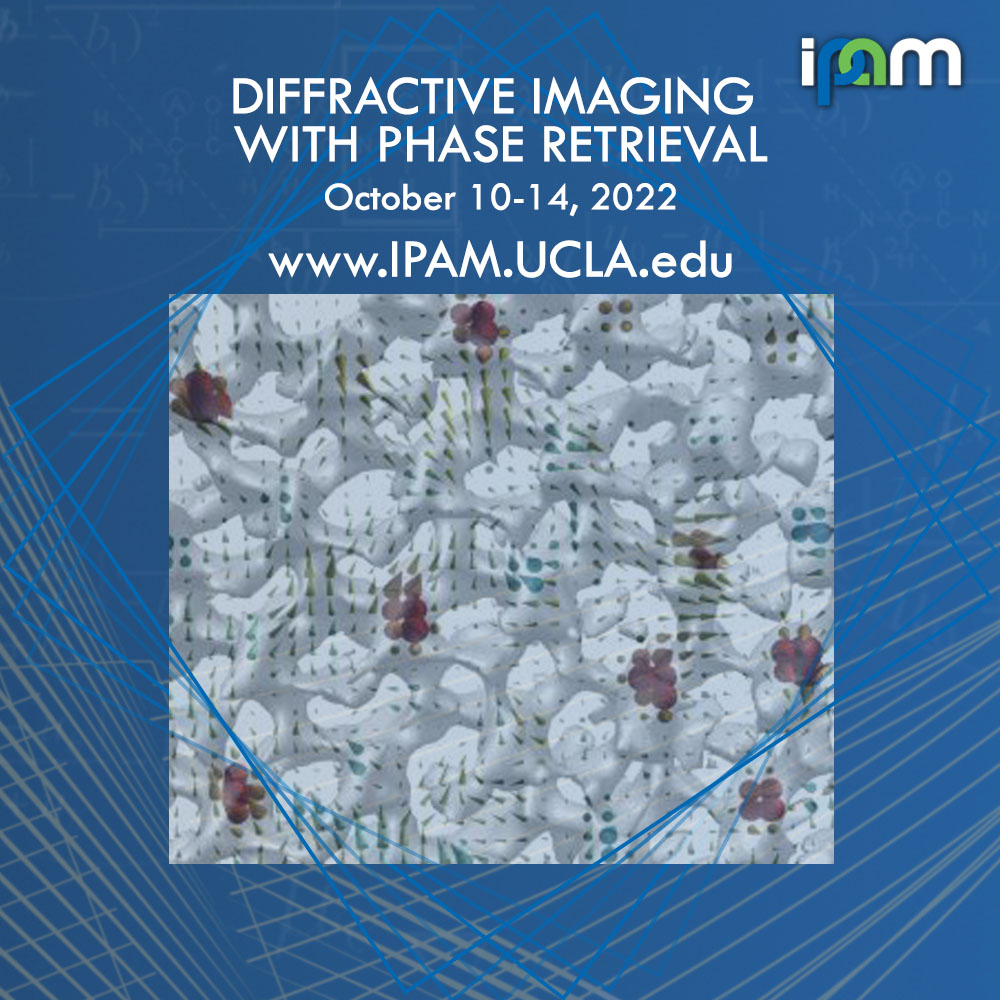Ian Robinson - Progress towards Machine Learning Phasing for Bragg Coherent Diffractive Imaging
Presenter
October 13, 2022
Abstract
Recorded 13 October 2022. Ian Robinson of Brookhaven National Laboratory presents "Progress towards Machine Learning Phasing for Bragg Coherent Diffractive Imaging" at IPAM's Diffractive Imaging with Phase Retrieval Workshop.
Abstract: The crystallographic “phase problem” relates to the fact that the intensity of a diffraction pattern from any sample object can be recorded accurately, but the phase is unknown (except in rare cases). The Fourier transform relationship between the object and its diffraction can be inverted to an image once the missing phase is known. In Bragg Coherent Diffractive Imaging (BCDI) the X-ray intensity distribution surrounding the Bragg peak of a crystal contains interference fringes which encode information about the sample density and the strain within it. The Shannon Information Theorem tells us that if this “speckle” in the diffraction patterns is sampled more than twice as finely as the peak spacing, the problem is mathematically overdetermined, but a computational method is still required to achieve the inversion [1]. A number of methods have been proposed to invert diffraction to real space images, all of them using iterative algorithms that converge on the solution. But despite “proofs” to the contrary [2], when applied to real data with noise, these methods are usually prone to stagnation at local minima and give multiple solutions, often very similar. In this presentation we will discuss the possibility that the speckle inversion “phase problem” may be amenable to Machine Learning approaches. This talk will introduce the BCDI method with examples and present our first demonstration for 2D [3] and 3D data [4].
Learn more online at: http://www.ipam.ucla.edu/programs/workshops/workshop-i-diffractive-imaging-with-phase-retrieval/?tab=schedule
[1] Some implications of a theorem due to Shannon, D. Sayre, Acta Cryst. 5, 843 (1952).
[2] Uniqueness of solutions to two-dimensional Fourier phase problems for localized and positive images. R. H. T. Bates, Comput. Vis. Graph. Image Process. 25, 205-217 (1984).
[3] Complex Imaging of Phase Domains by Deep Neural Network, Longlong Wu, Pavol Juhas, Shinjae Yoo and Ian Robinson, IUCrJ 8 12-21 (2021)
[4] 3D Coherent X-ray Imaging via Deep Convolutional Neural Networks, Longlong Wu, Shinjae Yoo, Ana F. Suzana, Tadesse A. Assefa, Jiecheng Diao, Ross J. Harder, Wonsuk Cha and Ian K. Robinson, npj Computational Materials 7 175 (2021)
